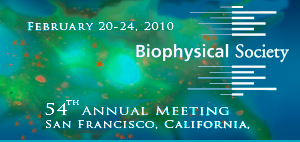
The Sakmar Laboratory
The Laboratory of
Molecular Biology & Biochemistry
at Rockefeller University
![]() Dec 18, 2009 | Twentieth Century-Fox Film Corporation
Dec 18, 2009 | Twentieth Century-Fox Film Corporation
'Signal Transduction' Highlighted in Hit Motion Picture, Avatar
Images and video clip courtesy of:
©2009 Twentieth Century-Fox Film Corporation
 Chemical & Engineering News
Chemical & Engineering News
Tools For Amyloids: Raman and infrared spectroscopic methods give glimpses of difficult-to- see parts of the amyloid formation process.
[Cover Story]
 RU Newswire| Nature Chemical Biology | Physorg.com |
RU Newswire| Nature Chemical Biology | Physorg.com |
"FTIR analysis of GPCR activation using azido probes"
New tag could enable more detailed structural studies of mammalian proteins by effectively expanding the genetic code, new research reveals a method that could theoretically be adapted to place a fluorescent probe at any position in any protein in a mammalian cell. The new technology could enable single-molecule fluorescent studies in live cells.
 March 6, 2008 | RU Newswire | Science Daily
March 6, 2008 | RU Newswire | Science Daily
Nanoscale tool allows scientists to study membrane proteins one at a time.
A new device is capable of encasing single membrane proteins from living cells, allowing investigators to individually stimulate key proteins with specific molecules and signals in order to precisely define the biological reactions that result.

December 23, 2007 | Science News
New method enables scientists to see smells
Animals and insects communicate through an invisible world of scents. By exploiting infrared technology, researchers at Rockefeller University just made that world visible. Now, with the ability to see smells, these scientists show that the brains of Drosophila melanogaster larvae not only make use of stereo cues to locate odors but also to navigate toward them.
 June 14, 2007 | science news
June 14, 2007 | science news
Protein is linked to functional development of brain neurons
Rockefeller University investigators say that a molecule that helps transport cargo inside nerve cells may have another, critically important, role related to how developing neurons sprout the projections that relay electrical signals within the brain.

March 29, 2006 | science news
Lizard’s ‘third eye’ sheds light on how vision evolved
A primitive third eye found in many types of lizards, used to detect changes in light and dark and to regulate the production of certain hormones, may help explain how vision evolved and how signals are transmitted from the eyes to the brain. Now, new experiments show that the molecular mechanisms that underlie this parietal eye’s responses to light are similar to those that transmit responses from rod and cone cells in the eye to the brain.
 Popular Mechanics| Canadian Broadcasting Co. | Science Daily |
Popular Mechanics| Canadian Broadcasting Co. | Science Daily |
Recreating a Functional Ancestral Archosaur Visual Pigment.
Scientist claim they've grown a part of a 250-million-year-old archosaurus, a creature so old it's actually an ancestor to the dinosaur. Dr. Belinda Chang is a molecular biologist with Rockefeller University's Thomas Sakmar Laboratory. She led the research, and she's in Manhattan.
 September 2000 | HHMI bulletin |
September 2000 | HHMI bulletin |
Mentoring the Youngest Researchers
Student interns in Tom Sakmar's lab work and learn beside their mentors, creating a productive and fun experience for both.
A gangly adolescent seems an unlikely member of the HHMI laboratory of Thomas Sakmar, known for its pioneering studies of rhodopsin, the protein that reacts to light in the retina of the eye. Simuni has done research here since July 1998, working as an intern alongside postdocs, graduate students and lab technicians. Situated on The Rockefeller University campus, it's a friendly place, but an intellectual pressure-cooker— surely, no place for a kid.




 Feb 2010
Feb 2010